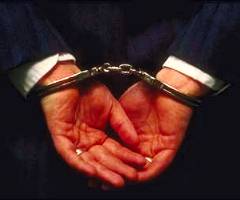2 June 1998
Praise From Mr Plod Makes Eyewitnesses Unreliable
 "It woz him wot done the blag." The courtroom testimony of a confident eyewitness has more impact on jurors than fingerprints and DNA matches - even when the eyewitness is completely wrong. Such is the conclusion of past research, which has also revealed that incorrect eyewitness identifications account for more miscarriages of justice than all other causes combined. And now a new study conducted by psychologists from Iowa State University has cast further doubts over the perceived reliability of eyewitness testimony.
"It woz him wot done the blag." The courtroom testimony of a confident eyewitness has more impact on jurors than fingerprints and DNA matches - even when the eyewitness is completely wrong. Such is the conclusion of past research, which has also revealed that incorrect eyewitness identifications account for more miscarriages of justice than all other causes combined. And now a new study conducted by psychologists from Iowa State University has cast further doubts over the perceived reliability of eyewitness testimony.
As reported in the June issue of the Journal of Applied Psychology, published by the American Psychological Association, the researchers carried out experiments designed to test the degree to which eyewitnesses are influenced by the positive or negative feedback they receive from law enforcers immediately after making an identification (such feedback is said to be common practice). The results make alarming reading.
After being shown a grainy video of a murder suspect, 352 subjects were asked to identify the gunman from a photospread of five faces, none of which was the person in question. Some of the suspects were then told "Good, you identified the actual suspect in the case", while others either received no feedback at all or were told the following: "Oh, you identified number X. The suspect is number Y." Participants then completed a detailed questionnaire, asking them everything from how good a view they had of the gunman's face to how willing they would be to testify as to their identification in court.
Perhaps not surprisingly, subjects who received positive feedback were more confident about their identifications, even though they were just as wrong as those who received either negative feedback or none at all. But disturbingly, they also seemed to remember the whole process of identification differently, reinventing such matters as to how they were able to make out details of the suspect's face.
Positive feedback distorts witnesses' reports in almost every aspect of the identification process, say the researchers, serving "to manufacture credible witnesses from a pool of inaccurate witnesses who were not particularly credible on their own." They recommend that photospreads and lineups be supervised by neutral observers. In addition, eyewitnesses should be asked about their confidence "at the time of the identification, rather than after there is an opportunity for other events to influence the eyewitnesses' confidence and other judgements."
